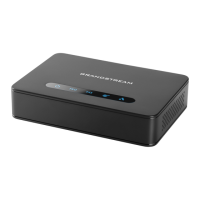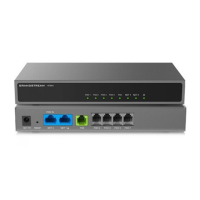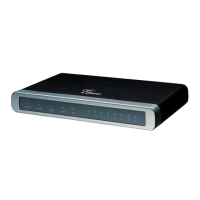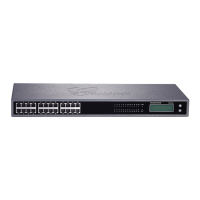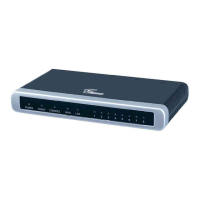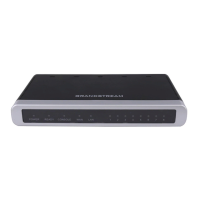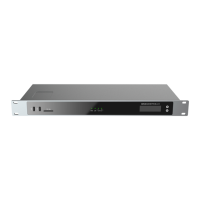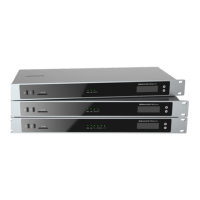outbound proxy. By default, this option is disabled.
From Domain Allows users to add the actual domain name, it will override the from header.This is an optional conguration.
Network Settings
Layer 3 QoS SIP DSCP the Diff-Serv value for SIP packets in decimal, the range is 0-63, default value is 26
Layer 3 QoS RTP DSCP Diff-Serv valuefor RTP packets in decimal, the range is 0-63, default value is 46
DNS Mode
Selects DNS mode to use for the client to look up server. One mode can be chosen.
A Record (Default):resolves IP Address of target according to domain name.
SRV:DNS SRV resource records indicate how to nd services for various protocols.
NAPTR/SRV: Naming Authority Pointer according to RFC 2915.
Use Congured IP: If the SIP server is congured as domain name, device will not send DNS queries, but will
use “Primary IP” or “Backup IP” to send SIP message if at least one of them is not empty. It will try to use
“Primary IP” rst, after 3 tries without any response, it will switch to “Backup IP 1”, then “Backup IP 2”, and then
it will switch back to “Primary IP” after 3 retries.
DNS SRV Failover Mode
Congure the preferred IP mode when DNS Mode is SRV or NAPTR/SRV.
• Default SIP request will always be sent to the address with the top priority based on the SRV query result,
even if this address is different from the registered IP address.
• Saved one until DNS TTL SIP request will always be sent to the registered IP address until DNS TTL expires or
registered IP address is unreachable.
• Saved on until no response SIP request will always be sent to the registered IP address only until registered
IP address is unreachable.
• Failback follows failback expiration time: the primary server regains control only after the failback expiration
time, allowing the secondary server to handle requests until then.
Failback Timer
When the primary SBC is up, device will send SIP requests to the primary SBC. If at any point device fails over
to the secondary SBC, the SIP requests will stay on the failover SBC for the duration of the failback timer.
When the timer expires, device will send SIP requests to the primary SBC, (in minutes. Default is 60 minutes,
max 45 days).
Maximum Number of SIP Request
Retries
This feature allows user to congure the number of SIP retries before failover occurs. (between 1 and 10,
default is 2).
Register Before DNS SRV Failover
This feature is used to control whether the device need to initiate a new registration request (following existing
DNS SRV fail-over mode) rst and then direct the non-registration SIP request (INVITE) to the new successfully
registered server or not.
Primary IP The main IP address used for communication and control.
Backup IP1 The secondary IP address used as a backup for communication in case the Primary IP fails.
Backup IP2
The third IP address used as an additional backup for communication in case both the Primary IP and Backup
IP1 fail.
NAT Traversal
Indicates type of NAT for each account. This parameter congures whether the NAT traversal mechanism is
activated. Users could select the mechanism from No, Keep-alive, STUN, UPnP.
Default setting is No.
Use NAT IP Denes NAT IP address used in SIP/SDP messages. It should only be used if required by ITSP.
Proxy-Require Determines a SIP Extension to notify the SIP server that the HT841/HT881 is behind a NAT/Firewall.
SIP Settings

